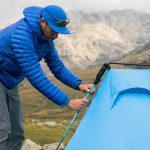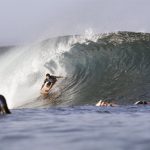Patagonia pledged to review how it vets photos used in its catalogs after the National Park Service reported an image in the company’s September, 2011 catalog of a first ascent in Utah’s Capitol Reef National Park violated regulations meant to protect natural resources.
Park rangers began investigating after seeing the image of climbers making a first ascent in Capitol Reef National Park in Patagonia’s September, 2011 apparel catalog. Rangers identified the route and determined that new bolts had been installed and that trundling of rocks on the route had occurred in violation of the Park System
Resource Protection Act (PSRPA).
During the investigation, two additional climbing routes were identified as first ascents completed by the individuals identified in the Patagonia catalog and by a newly identified third party not associated with the Patagonia photograph. All three individuals were held liable for damages in accordance with the PSRPA, which provides that any person or instrumentality who injures, destroys or causes the loss of any park resource is liable for response costs and damages.
In May a sum of $4,000 was paid to Capitol Reef National Park after negotiations between the NPS Intermountain Office of the Solicitor and the defendants attorney.
Patagonia only learned that the climbers had been cited for violating the law Friday, when alerted by a reporter at the Salt Lake City Tribune newspaper, who had read a report of the settlement on a NPS website, said Patagonia spokesman Adam Fletcher.
“We were not previously aware of any issues with this particular
photograph, since climbing is allowed in other areas of Capitol Reef
National Park, and we have no relationship with the individuals who
appear in the catalog photo,” said Fletcher. “Weve reached out to the freelance
photographer to better understand the circumstances around this
incident.”
Fletcher added that Patagonia works very hard to makes sure every photo its publishes depict responsible climbing practices that align with Patagonia’s broad environmental mission by asking vigilant questions and requiring locations always be identified.
“We also value a policy that allows talented, sometimes unknown photographers from all over the world to participate in our catalog,” Fletcher added. “This is an important balance, and by and large we get it right. When we make a mistake, we always look hard at our process and see if any improvements can be made, and well do that in this case as well.”













